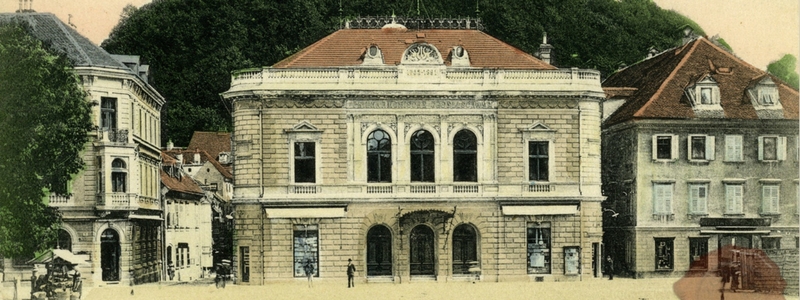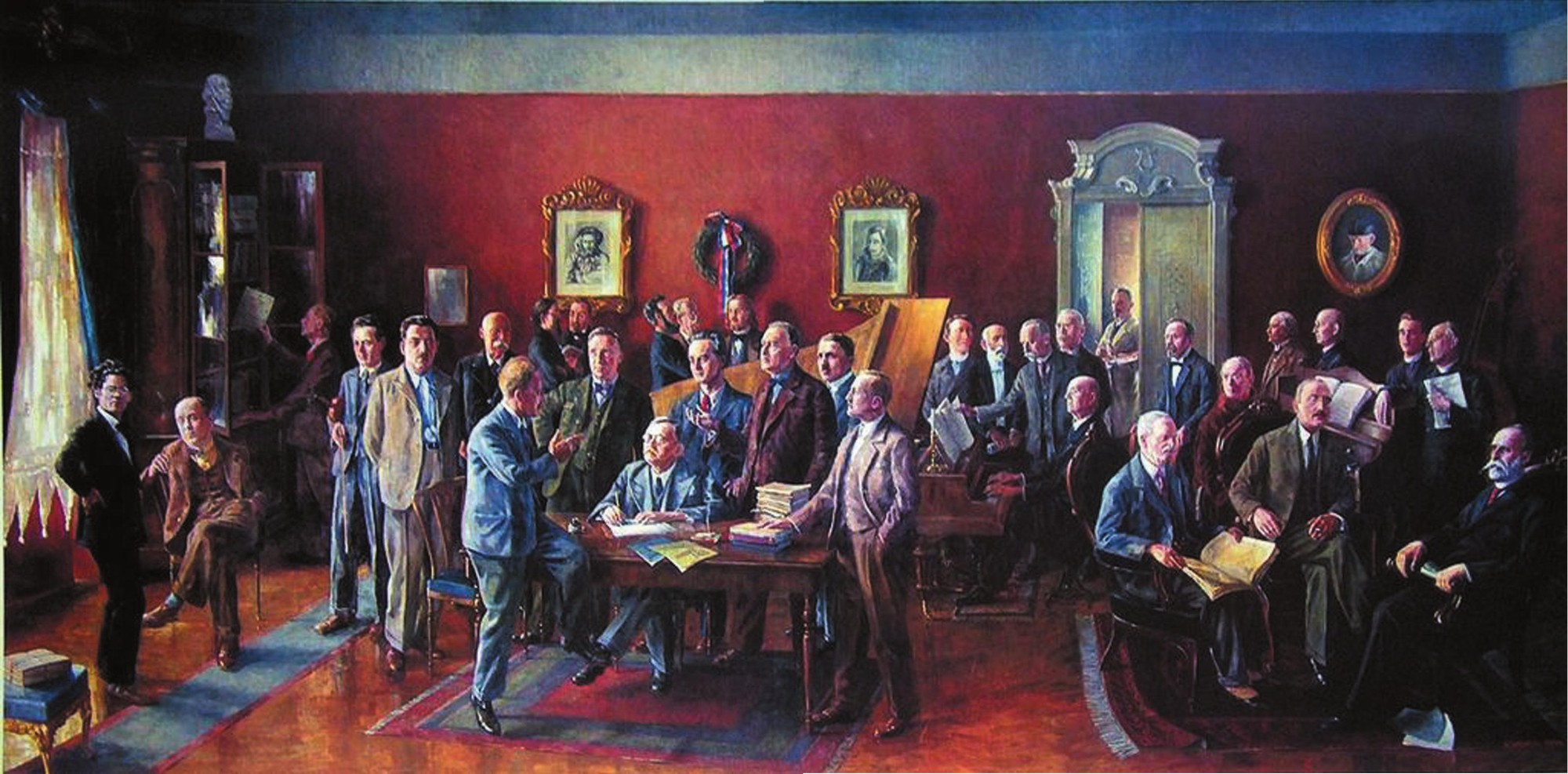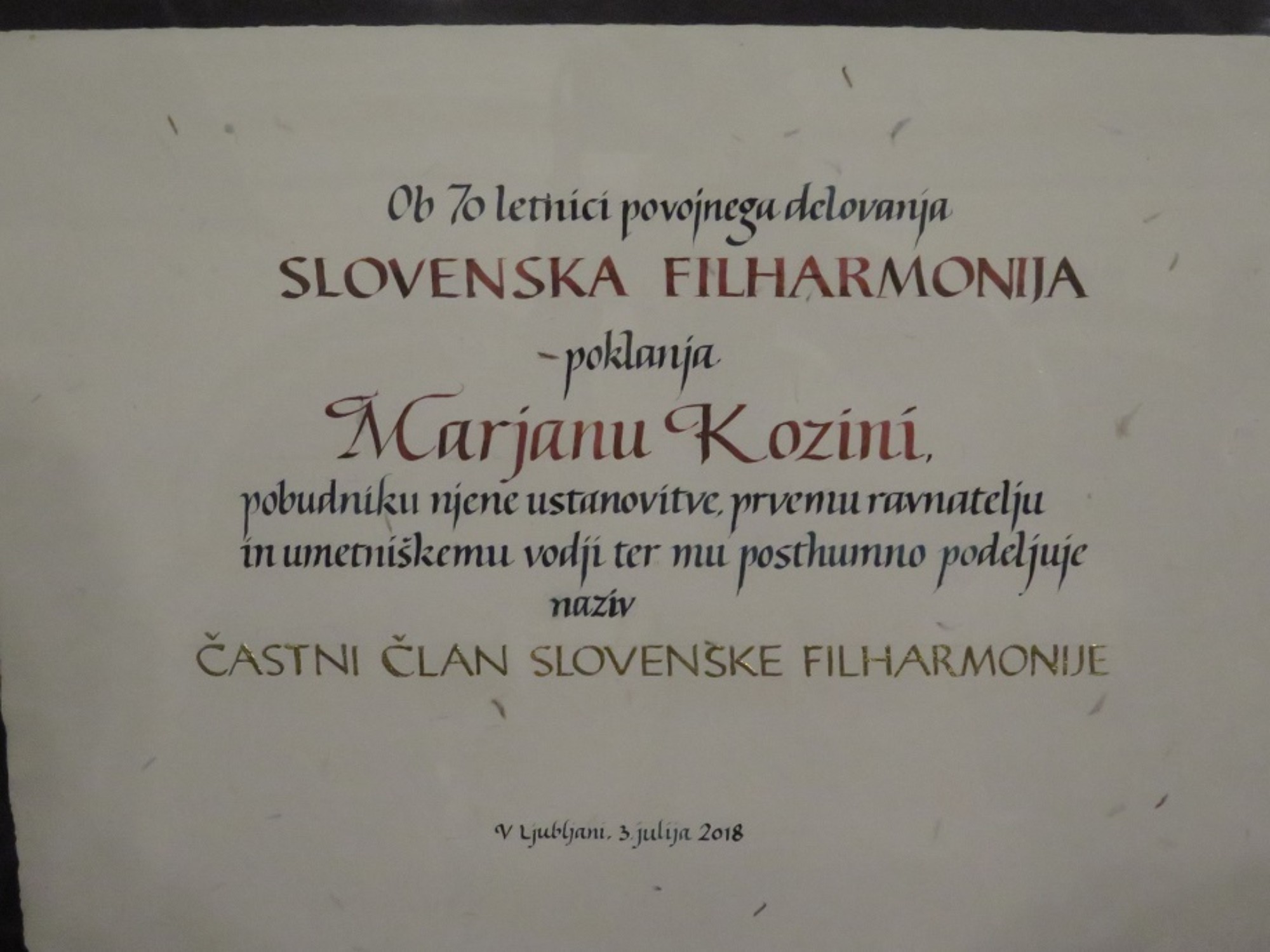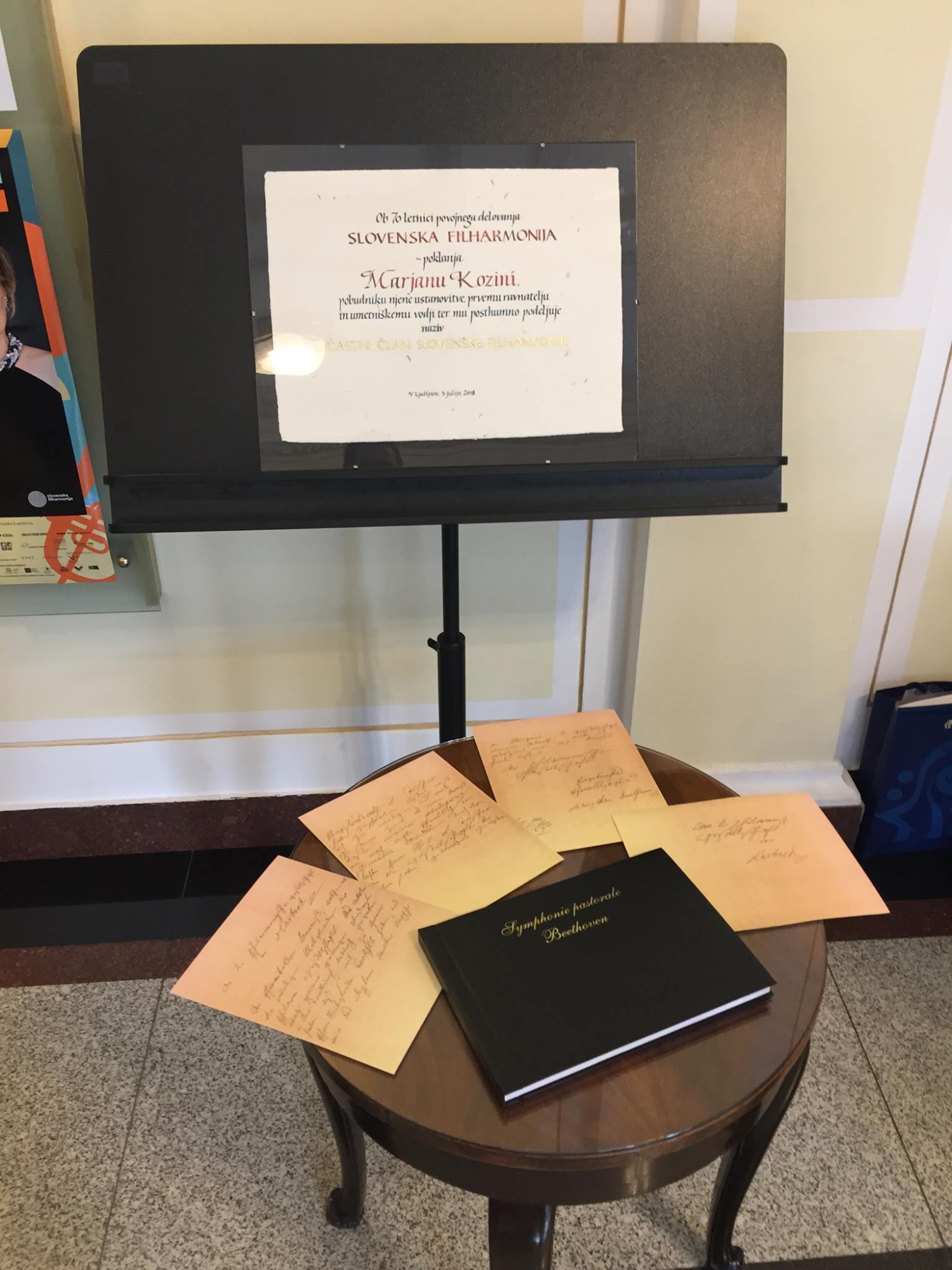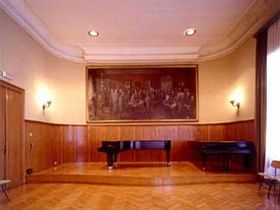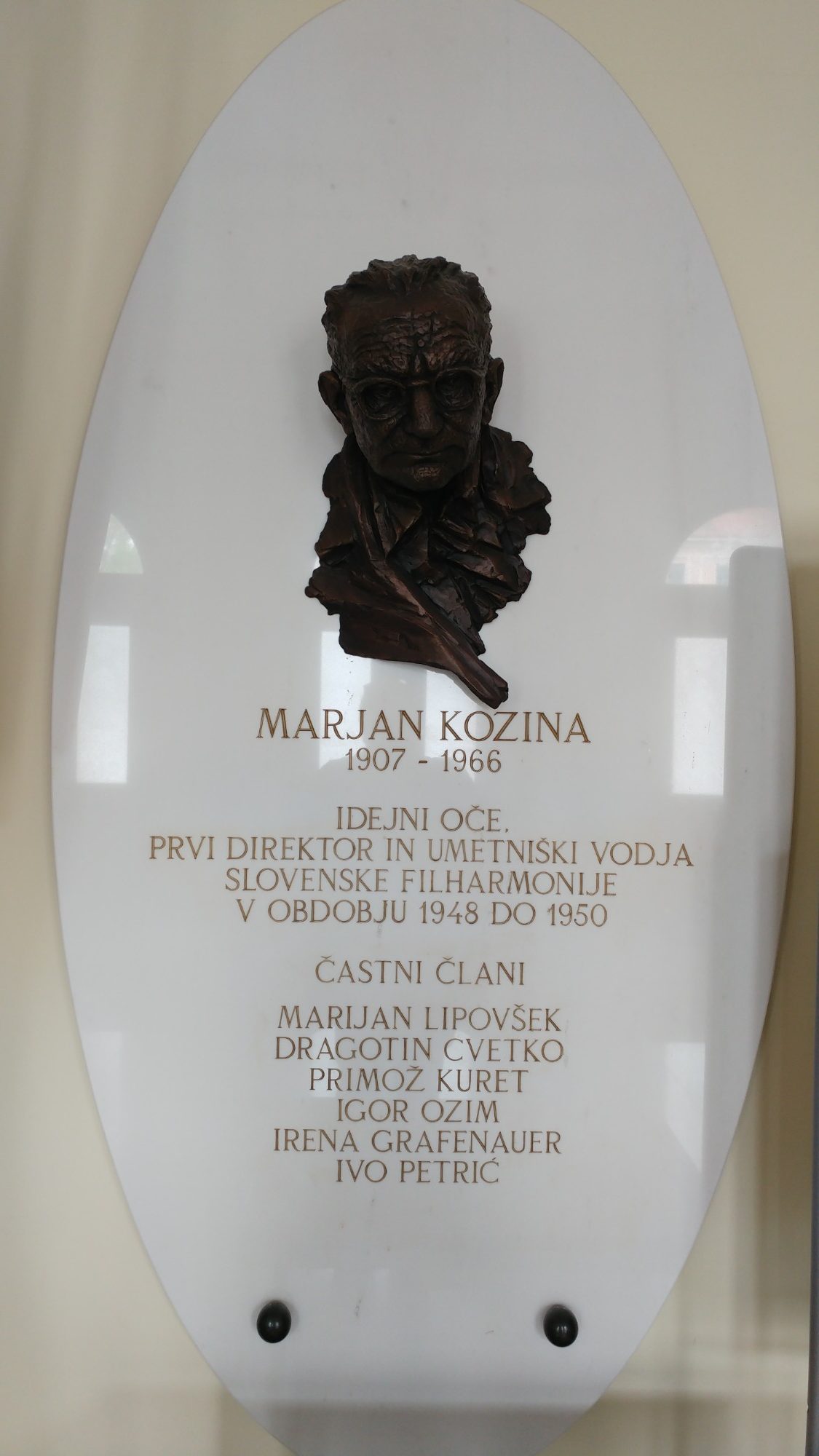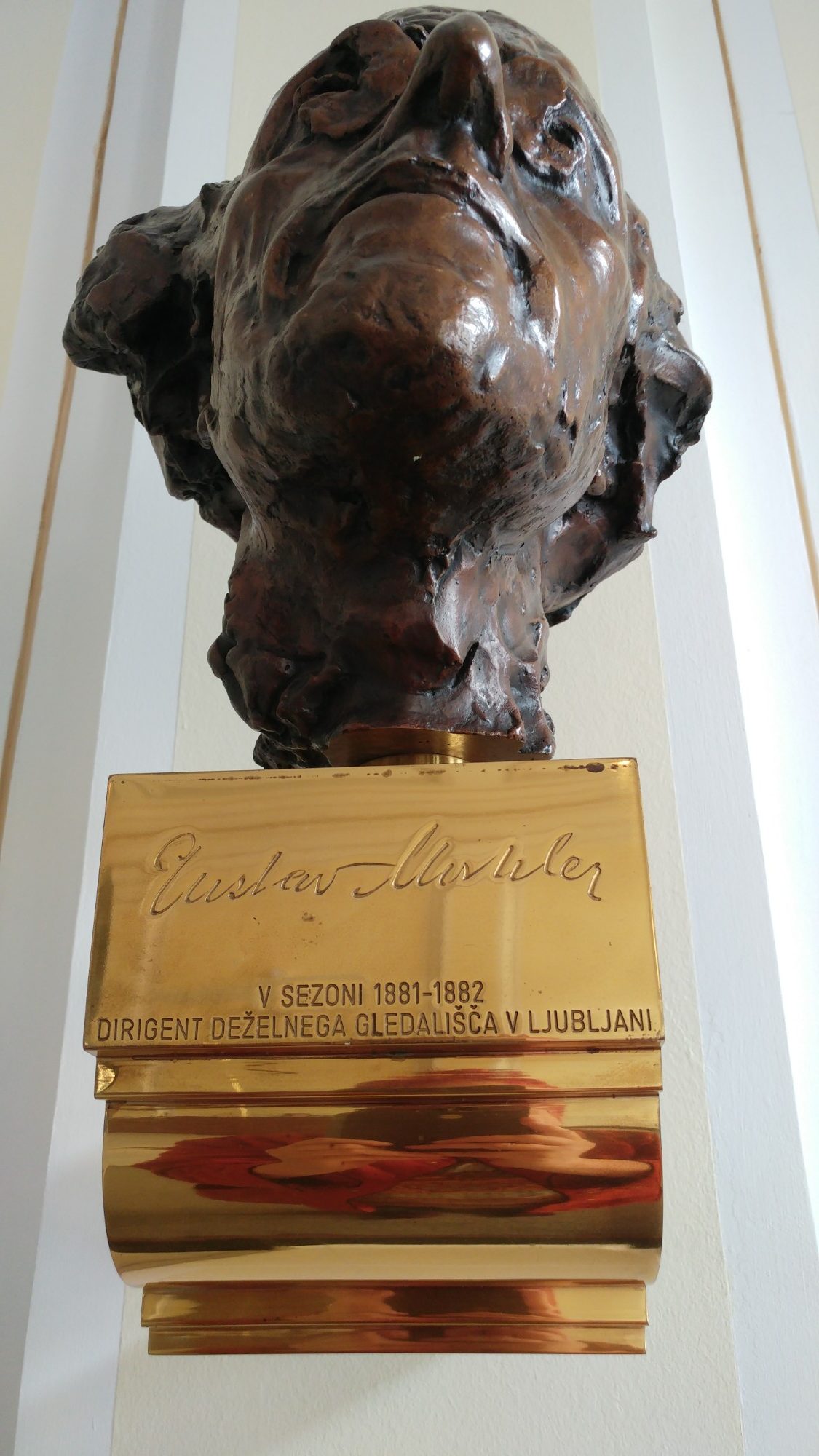Located in Congress Square, the Slovenian Philharmonic is one of Ljubljana’s main iconic buildings. A landmark adorning the heart of the city, the venue, with a monumental historical façade, two auditoriums, a labyrinth of auxiliary rooms and a myriad of interesting small details, has a rich and fascinating history. A moat surrounding the New Square fortification was located here in the Middle Ages. In the 17th century, the Carniolan Provincial Estates had an indoor riding arena built on this site; the hall was enlarged and reconstructed in 1765 as Ljubljana’s first theatre building based on plans by a baroque architect, Lovrenc Prager. In 1789, the first theatre performance in Slovenian, Županova Micka (Molly, the Mayor’s Daughter) by Anton Tomaž Linhart, was staged at the venue, which could accommodate up to 600 people.
Around 1845, the theatre was redesigned following classicistic models. In 1887, the theatre and all its movable assets were destroyed in a raging fire.
Dating from 1892, the present-day Slovenian Philharmonic building was commissioned by the Philharmonic Society and designed by architect Adolf Wagner. It was built in the neo-renaissance style characteristic of theatre and cultural buildings of the time. The building’s architectural style has remained unchanged, undergoing no remodelling either during the first extensive renovation, completed in 1937 following the plans by Jože Platner, when a balcony was added to the building, or during the second renovation, in 2001, when restoration based on the plans by architectural design bureau Biro 71 and restorer France Kokalj was carried out, and Plečnik’s riverside colonnade was glazed.
With the end of World War II, the music scene changed in Slovenia, heightening the need to establish the Slovenian Philharmonic. In 1947, on the initiative of composer Marjan Kozina, conductor Samo Hubad and musicologist Vlado Golob, a resolution was passed on the formation of the Slovenian Philharmonic.
The Slovenian Philharmonic had a symphony orchestra, mixed and youth choirs (until 1952), a string quartet (known as the Ljubljana Quartet) and a concert agency (which became independent in 1952). The Orchestra consisted of the Radio Ljubljana Symphony Orchestra members and musicians of the Trieste Philharmonic. The latter came to Ljubljana accompanied by its conductor, Jakov Cipci. Both choirs were transferred to the new institution from the Radio. The first concert by the new Slovenian Philharmonic Orchestra, led by Spanish conductor Salvador Bacarisse, took place in the grand Union Hall on 13 January 1948.
The Slovenian Philharmonic season series has starred many brilliant soloists and conductors, including violinists Yehudi Menuhin and Henryk Szeryng, and the celebrated Arthur Rubinstein, one of the greatest pianists of the last century, all of whom performed under the baton of Bogo Leskovic. The Slovenian Philharmonic Orchestra’s international appearances include Warsaw Autumn, the Ascona and Mons festivals, an orchestra festival in New York (Carnegie Hall), a season-ticket concert in Salzburg, performances in Switzerland, the Yugoslav Culture Days in the Soviet Union, etc. Since World War II, the Slovenian Philharmonic has toured 11 countries, making guest appearances in 105 cities, 40 Slovenian towns, and in 16 Yugoslav towns.
In addition to the Orchestra, the Slovenian Philharmonic currently comprises the Slovenian Philharmonic Brass Ensemble (TASF), the Philharmonic Percussion Ensemble, the Slovenian Philharmonic Double Bass Quartet, the String Chamber Orchestra and the Slovenian Philharmonic Choir.
Portrait of Slovenian Composers
In addition to sculptures dedicated to Marjan Kozina and Gustav Mahler, the Slovenian Philharmonic houses another artistic attraction, a group portrait of Slovenian composers, an oil painting done in 1936 by Saša Šantel, which adorns the Osterc Hall. The painting contains likenesses of 37 composers, including Anton Foerster, Slavko Osterc, Matija Bravničar, Lucijan Marija Škerjanc, Anton Lajovic, Viktor Parma, Emil Adamič, Jacobus Handl Gallus (composers belonging to historically more remote periods are represented in paintings on a wall, as pictures within a picture) and even Primož Trubar, depicted in a bust installed on a cabinet. The painter tellingly arranged the composers into ideologically related groups and in doing so highlighted the expressly idiosyncratic and reclusive figure of Marij Kogoj, standing next to his mentor Osterc, yet largely distanced from all the others.
Several other details have symbolic meaning: Stanko Premrl is resting his hand against a harmonium, the Novi akordi (New Chords) magazine is lying in front of Gojmir Krek, Flajšman is holding the Slovenska gerlica (Slovenian Dove) magazine, and Gerbič has the Glasbena zora (Musical Dawn) magazine in his lap, while the highest pile of choral sheet music is situated on a desk in front of Emil Adamič.
